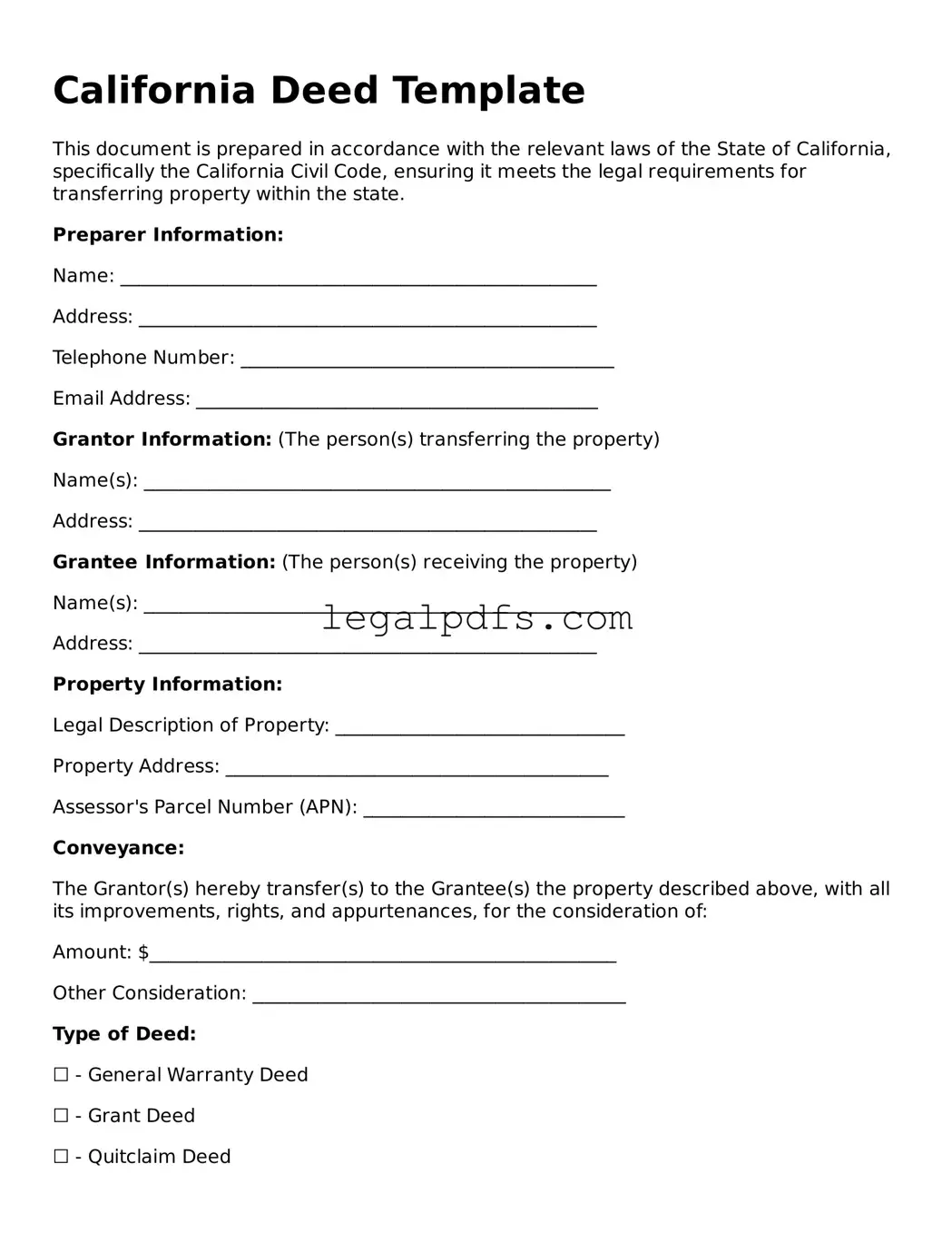California Deed Template
This document is prepared in accordance with the relevant laws of the State of California, specifically the California Civil Code, ensuring it meets the legal requirements for transferring property within the state.
Preparer Information:
Name: ___________________________________________________
Address: _________________________________________________
Telephone Number: ________________________________________
Email Address: ___________________________________________
Grantor Information: (The person(s) transferring the property)
Name(s): __________________________________________________
Address: _________________________________________________
Grantee Information: (The person(s) receiving the property)
Name(s): __________________________________________________
Address: _________________________________________________
Property Information:
Legal Description of Property: _______________________________
Property Address: _________________________________________
Assessor's Parcel Number (APN): ____________________________
Conveyance:
The Grantor(s) hereby transfer(s) to the Grantee(s) the property described above, with all its improvements, rights, and appurtenances, for the consideration of:
Amount: $__________________________________________________
Other Consideration: ________________________________________
Type of Deed:
☐ - General Warranty Deed
☐ - Grant Deed
☐ - Quitclaim Deed
This deed is executed under the laws of the State of California, providing the Grantee(s) with the full warranty of the right to convey and clear title, except as otherwise noted:
Exceptions, if any: _________________________________________
Signatures:
The Grantor(s) and Grantee(s) must sign this document in the presence of a notary public.
______________________________________________
Grantor Signature Date: ______________________________________
______________________________________________
Grantee Signature Date: ______________________________________
Acknowledgment by Notary Public
State of California )
County of _______________ ) ss.
On ______________________, before me, ____________________________ (insert name and title of the officer), personally appeared ________________________________________________________, who proved to me on the basis of satisfactory evidence to be the person(s) whose name(s) is/are subscribed to the within instrument, and acknowledged to me that he/she/they executed the same in his/her/their authorized capacity(ies), and that by his/her/their signature(s) on the instrument, the person(s), or the entity upon behalf of which the person(s) acted, executed the instrument.
I certify under PENALTY OF PERJURY under the laws of the State of California that the foregoing paragraph is true and correct.
WITNESS my hand and official seal.
Signature _______________________________
Notary Public
This document was prepared by ________________________ (Name of Preparer), who is not an attorney but rather a qualified legal document assistant in the State of California. The preparer operates under the regulation and authority of the County Clerk’s office, providing self-help services at your specific direction.
